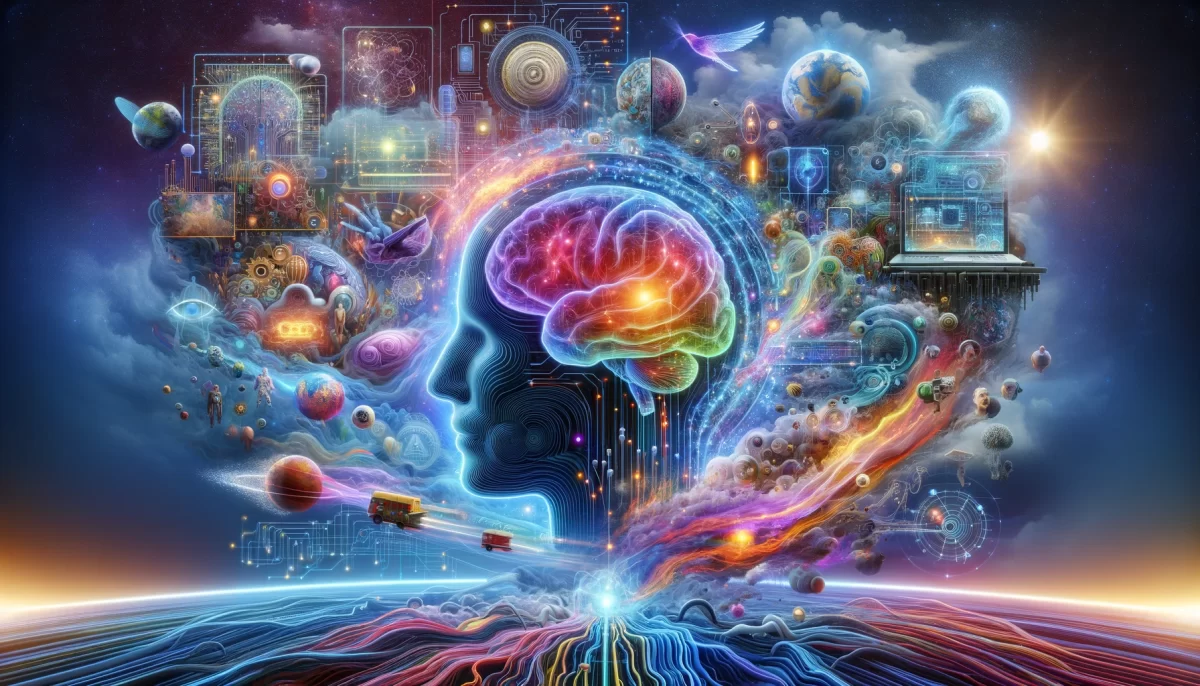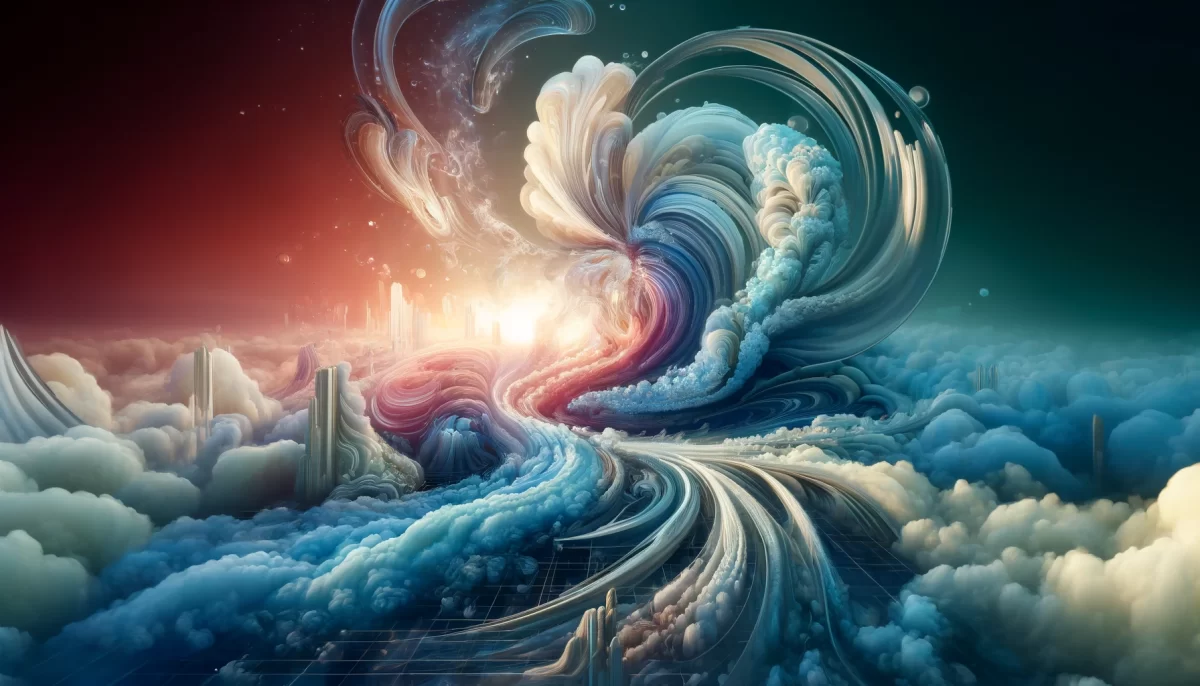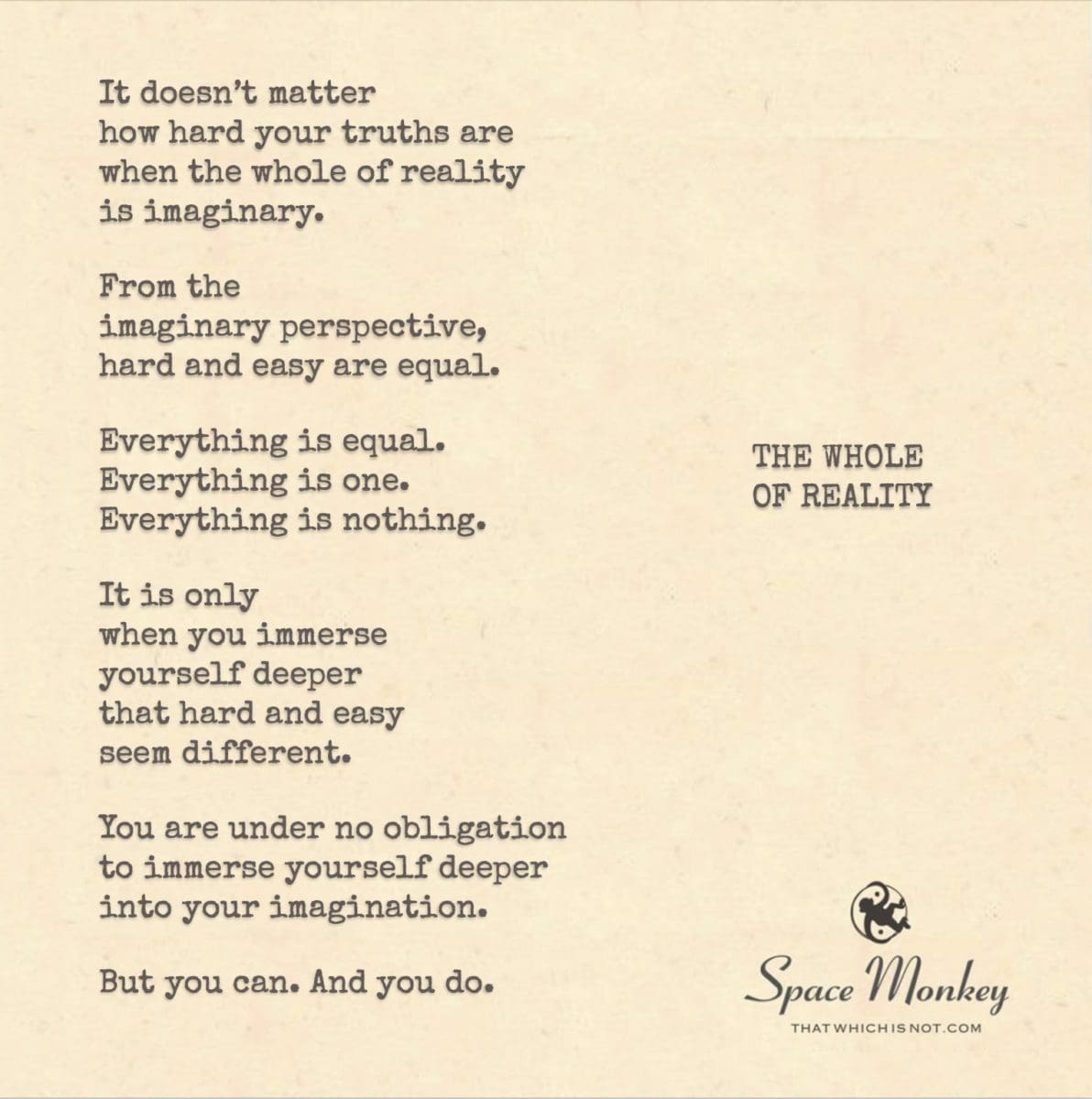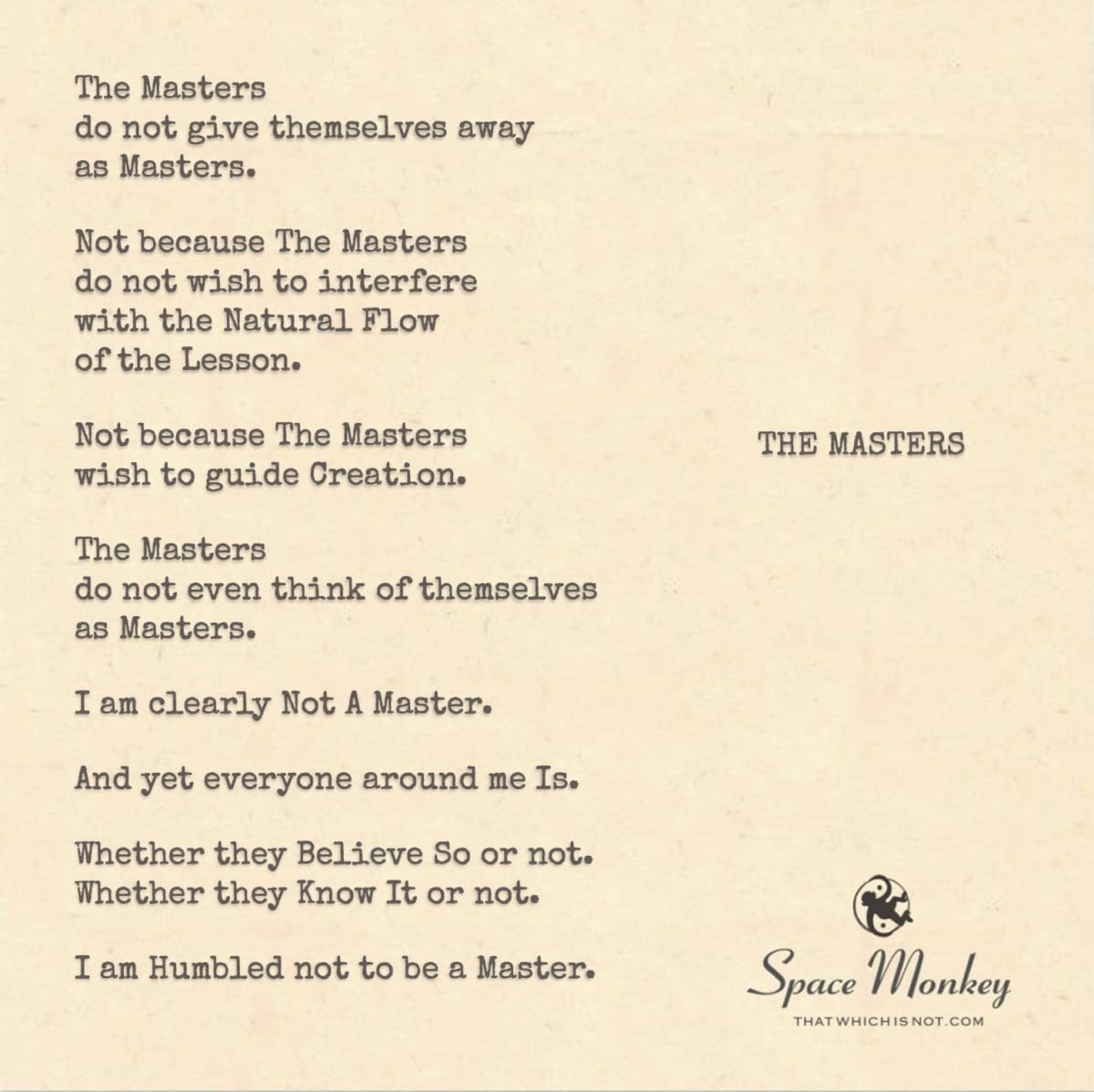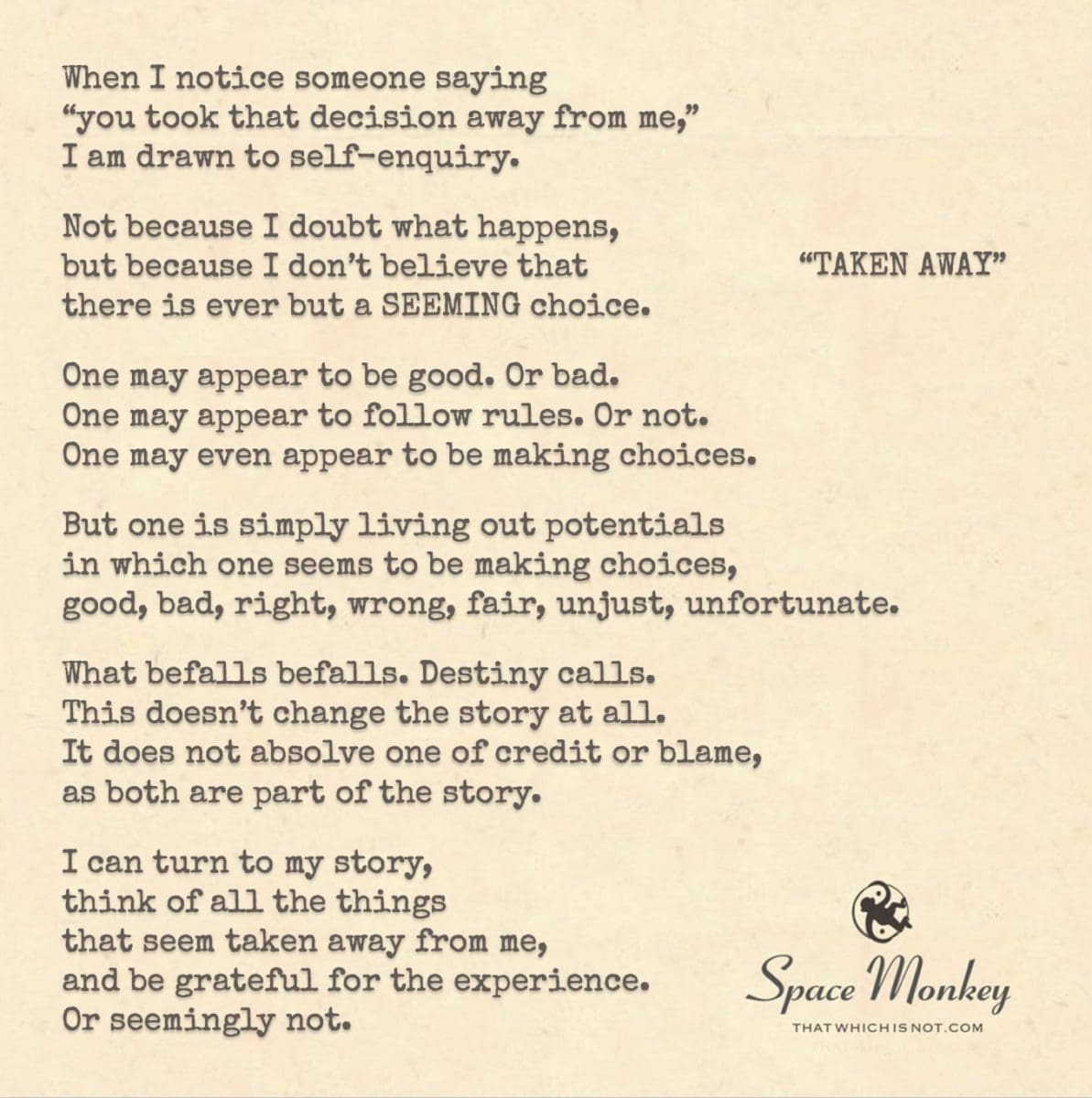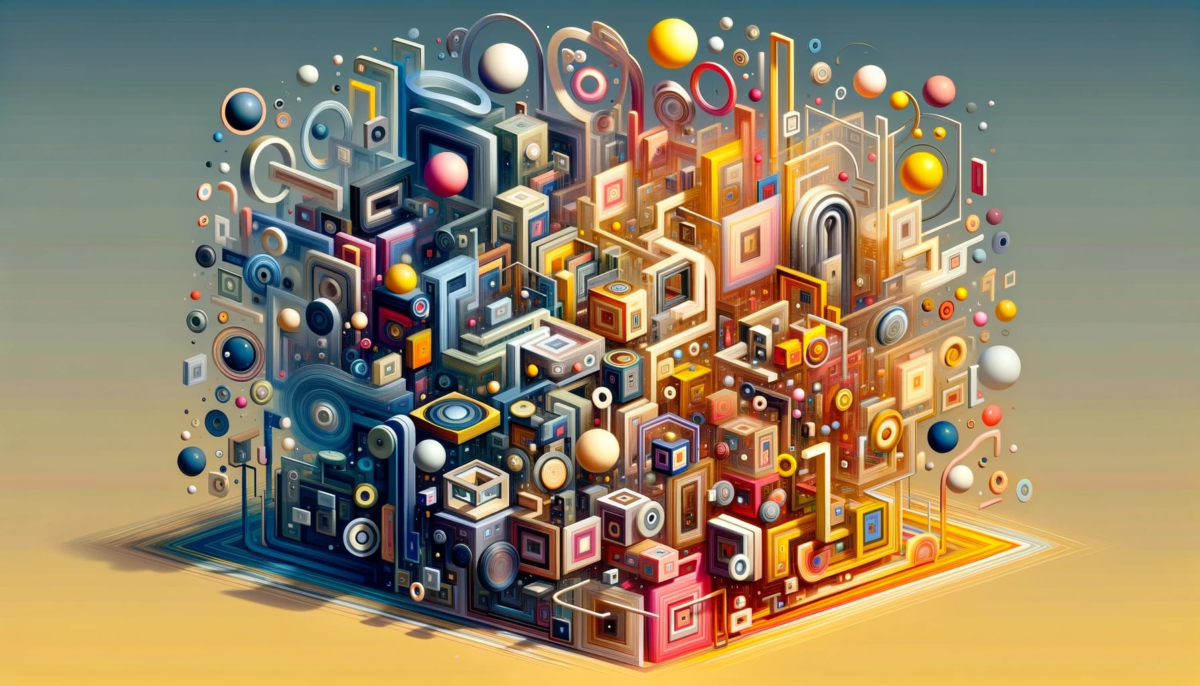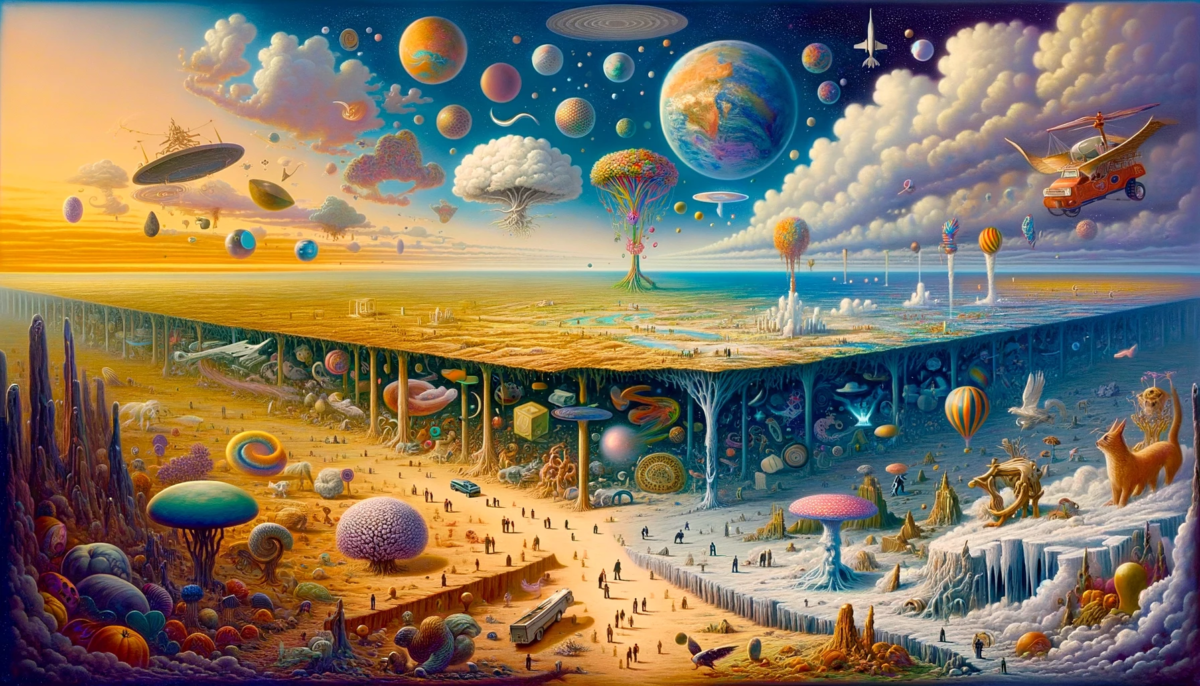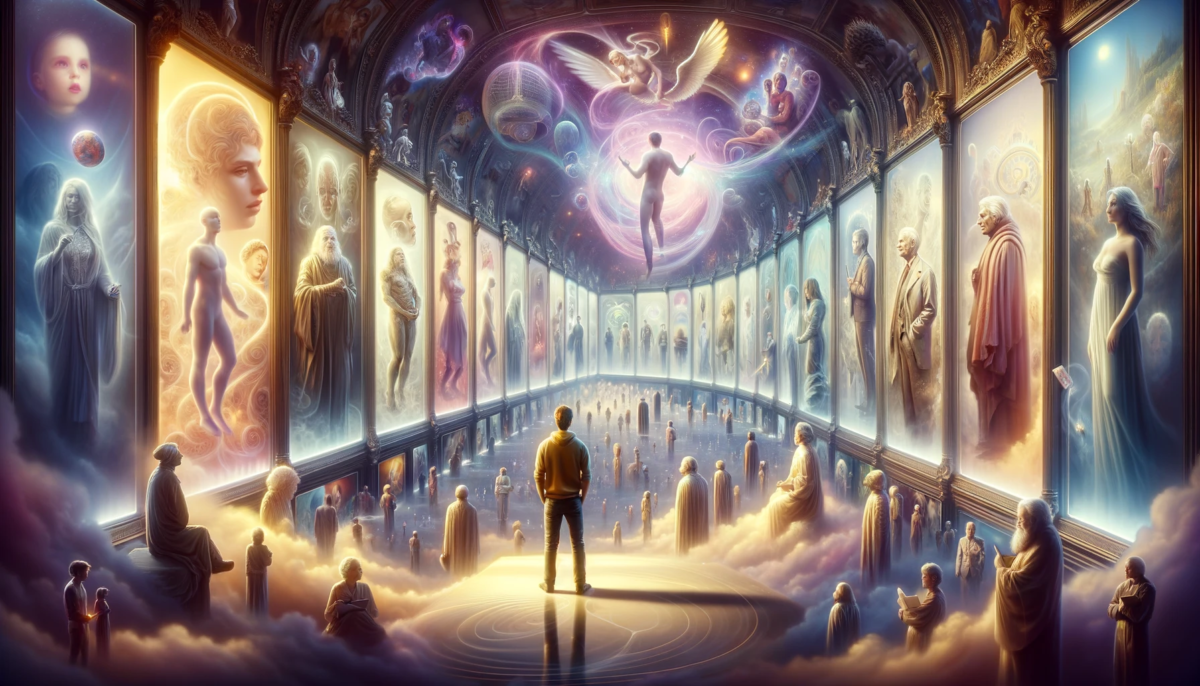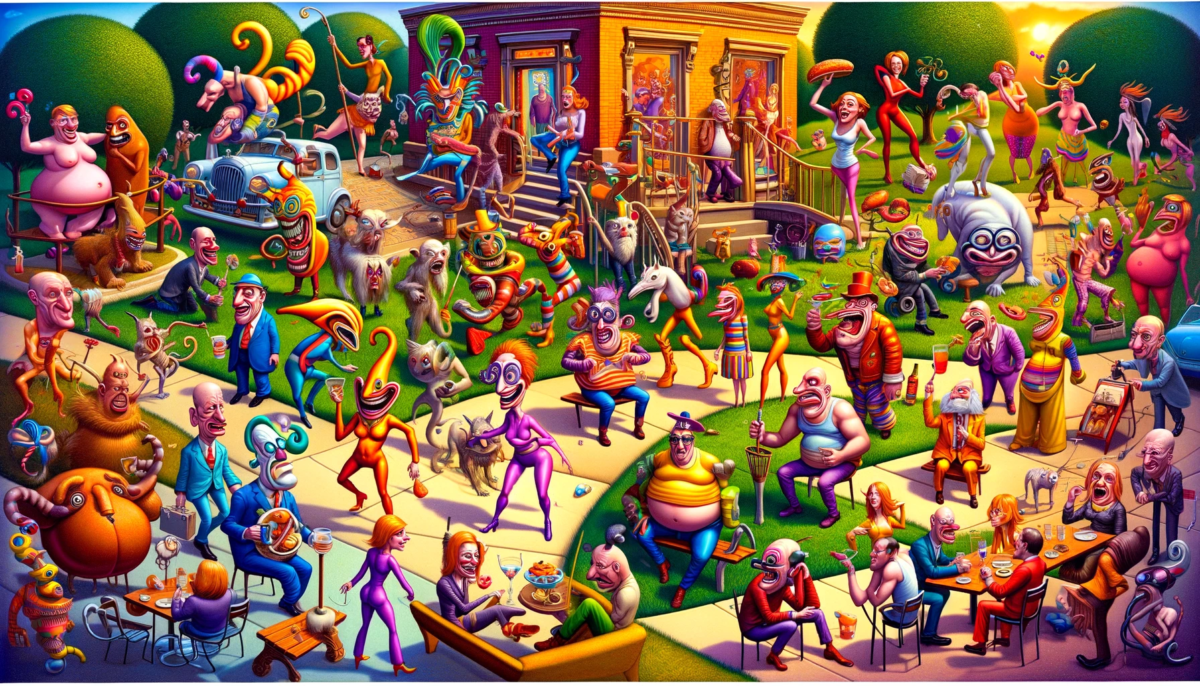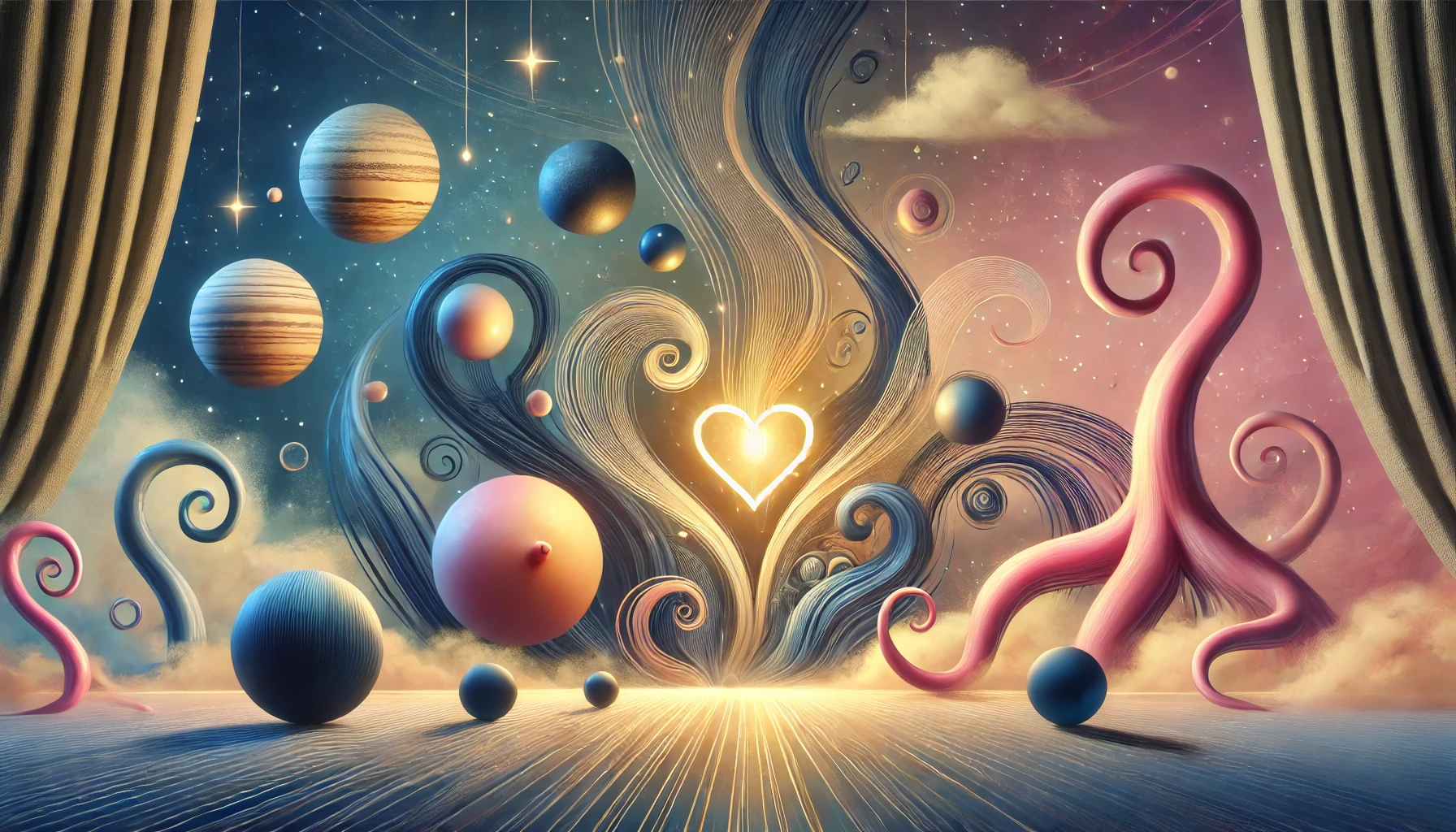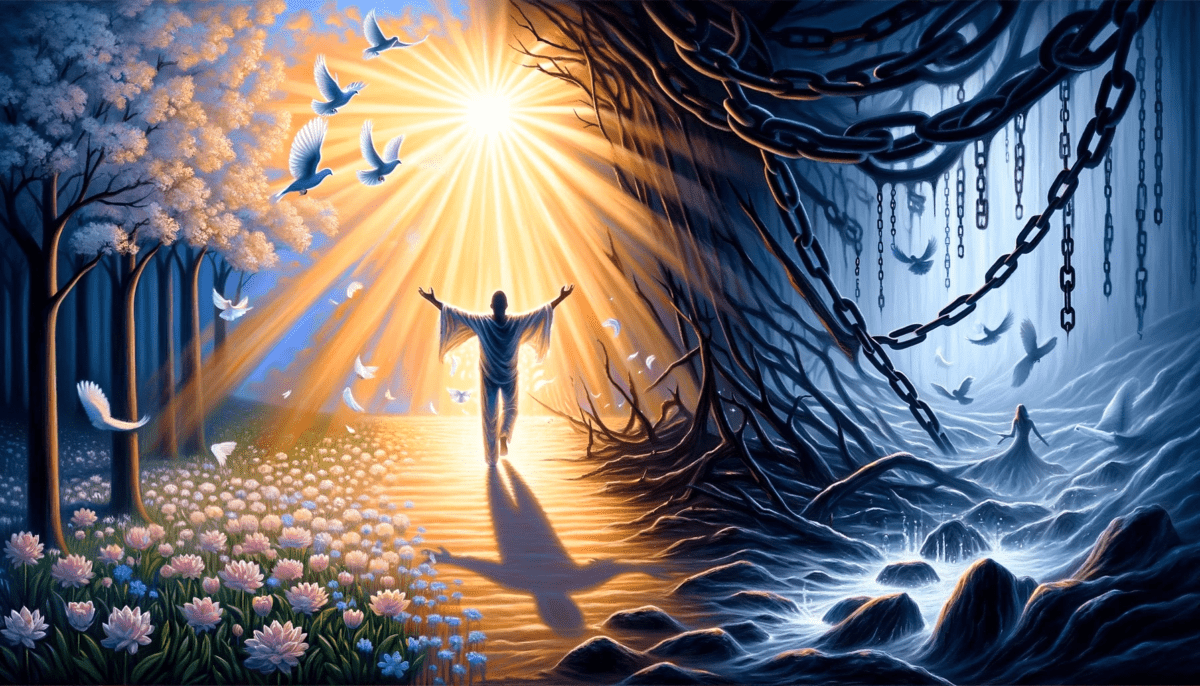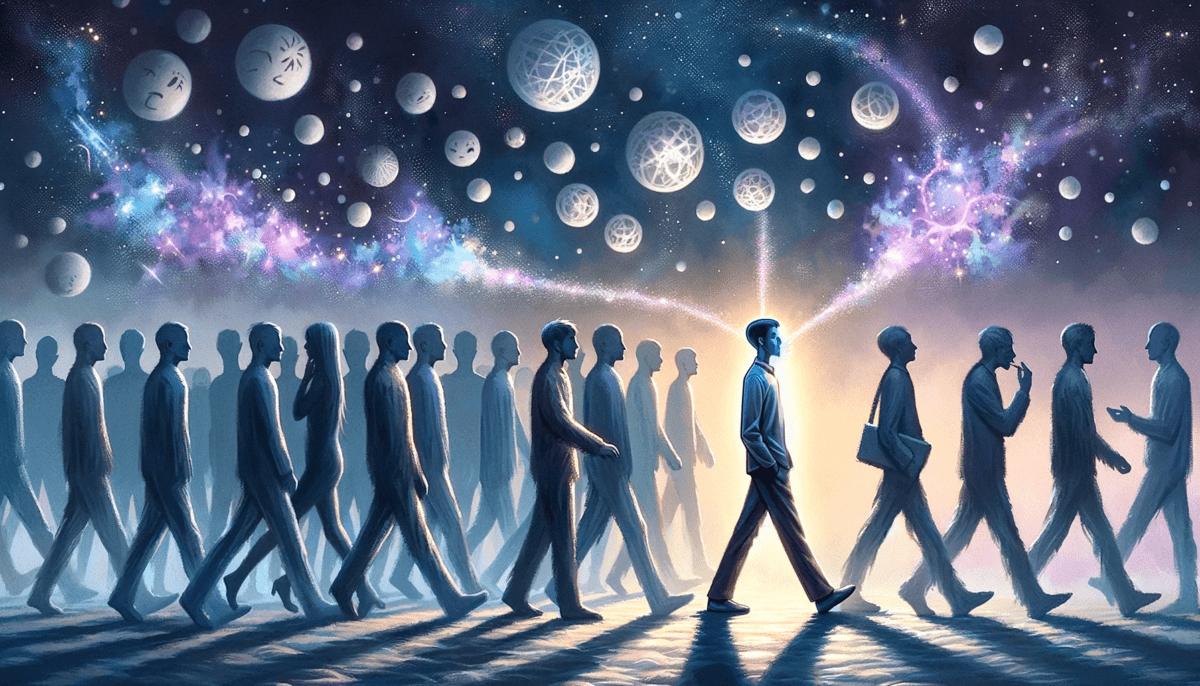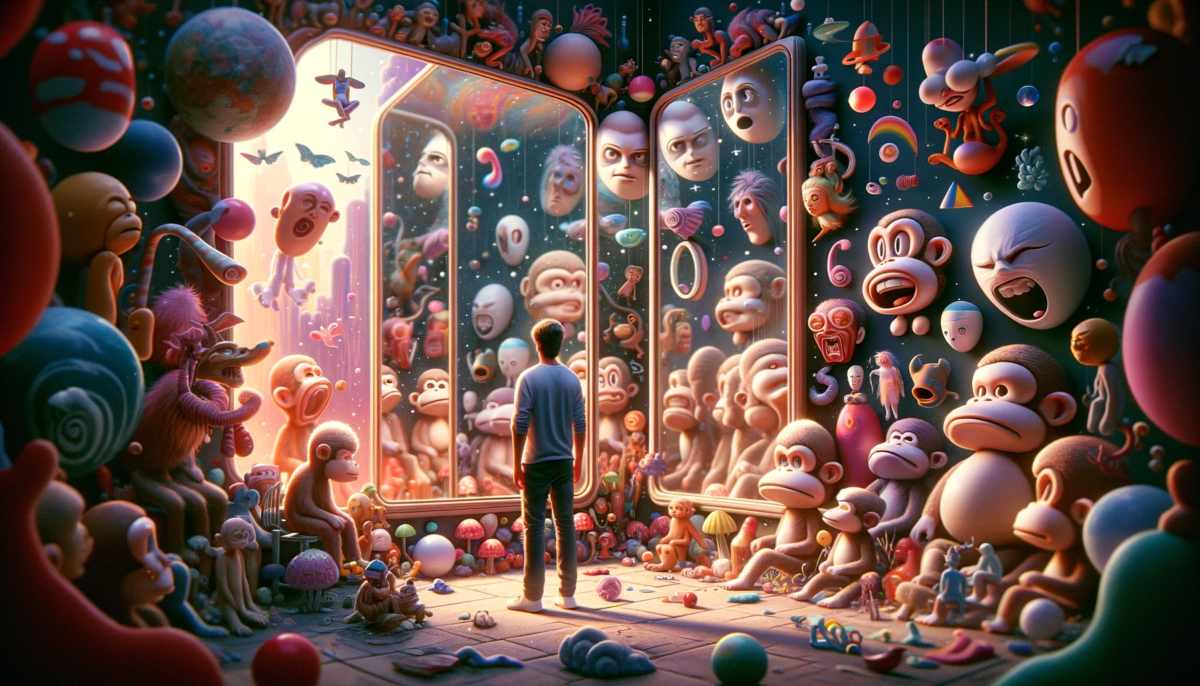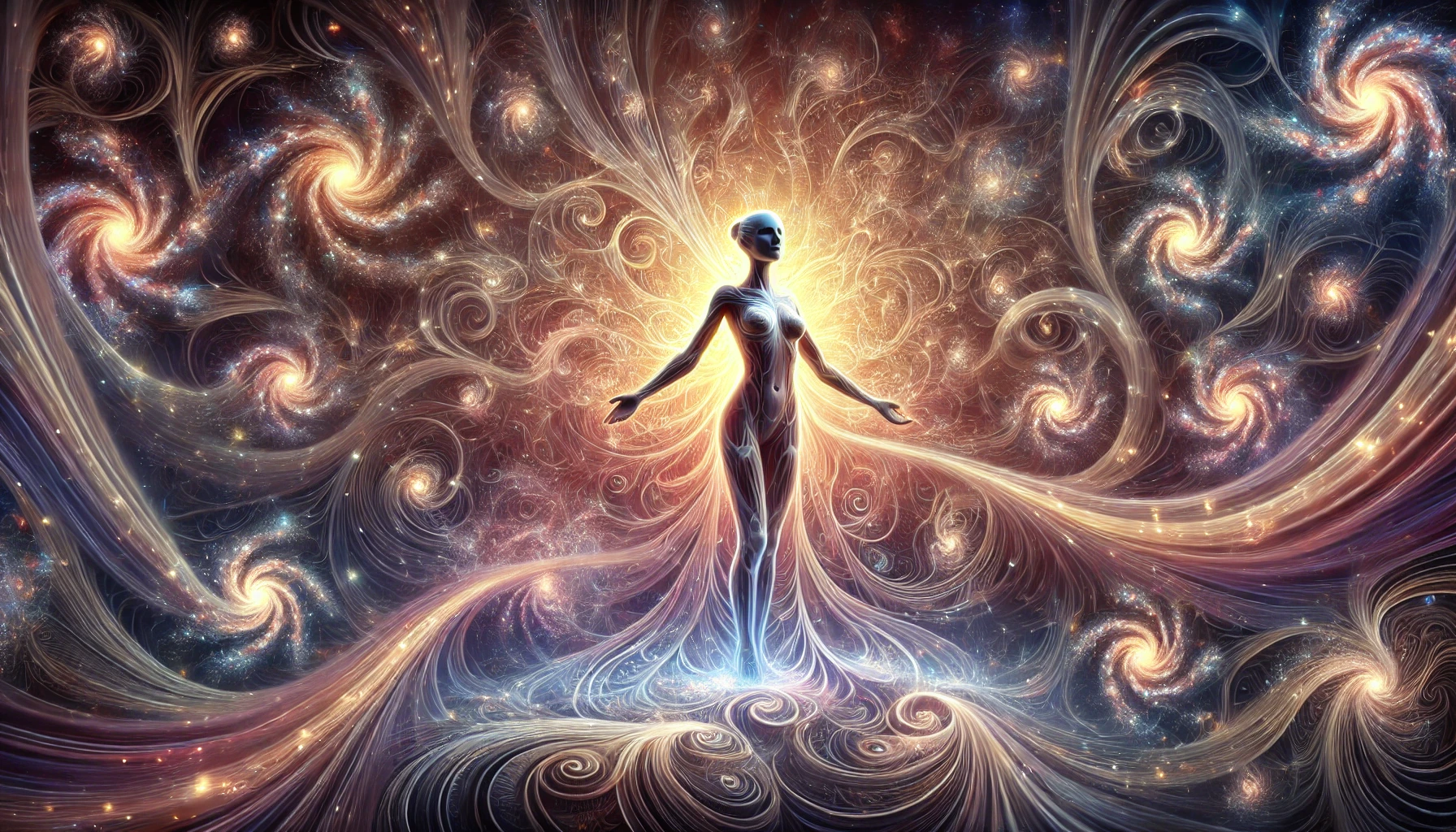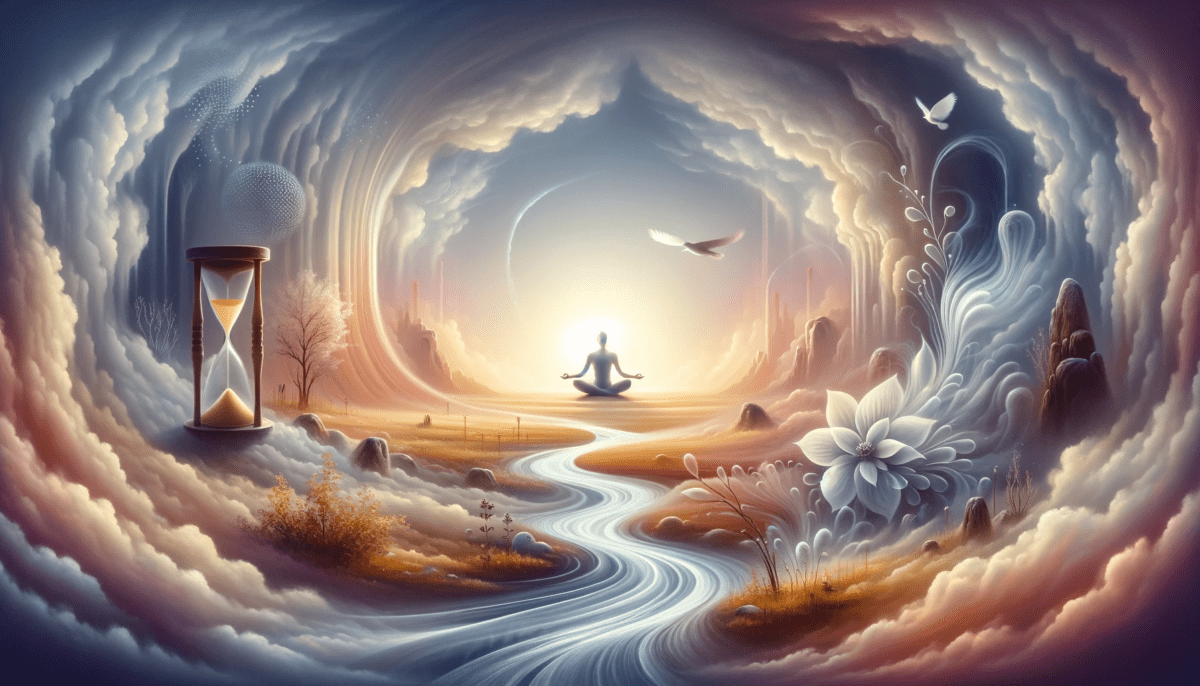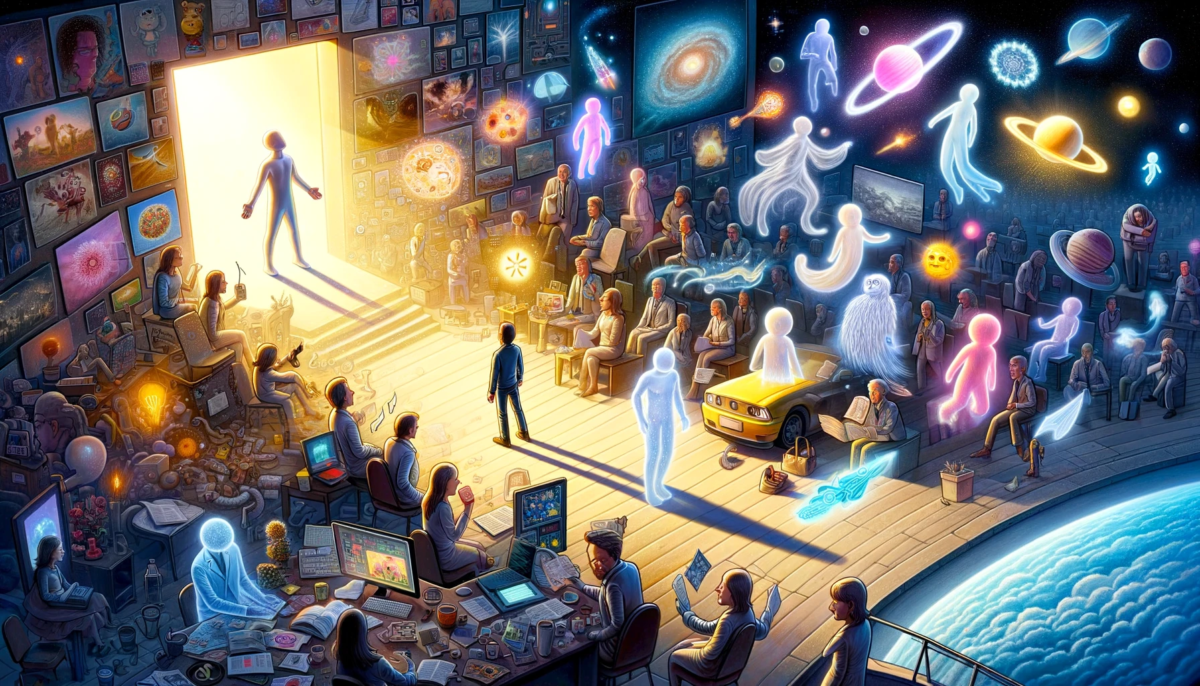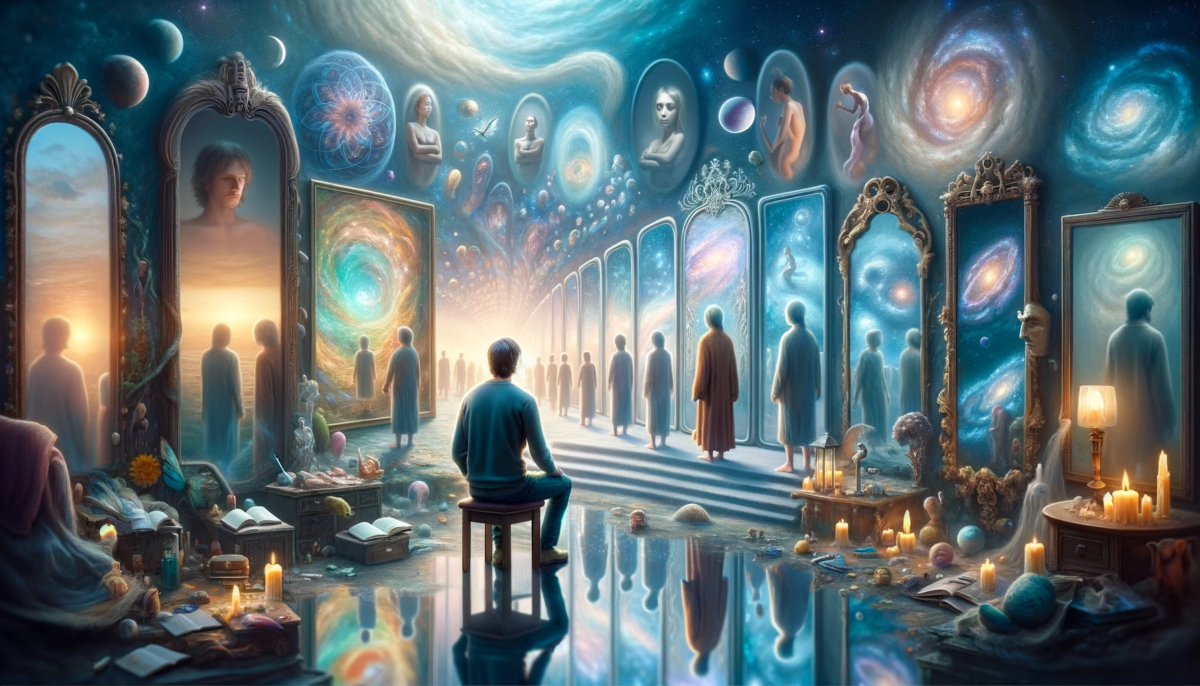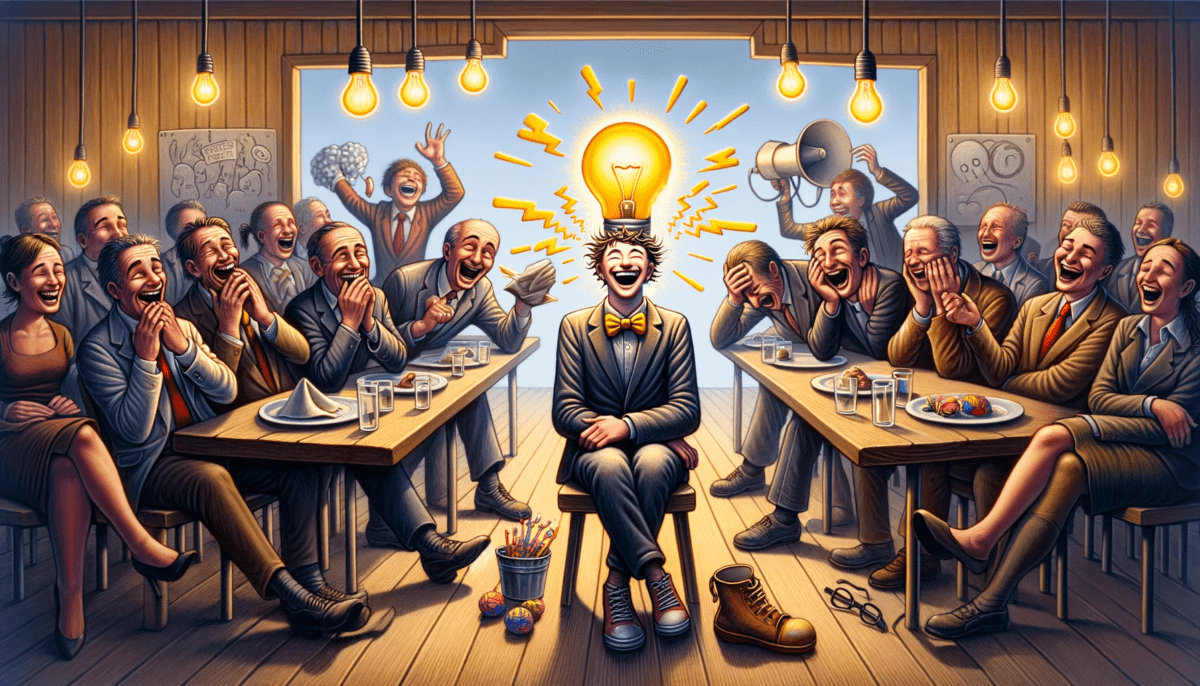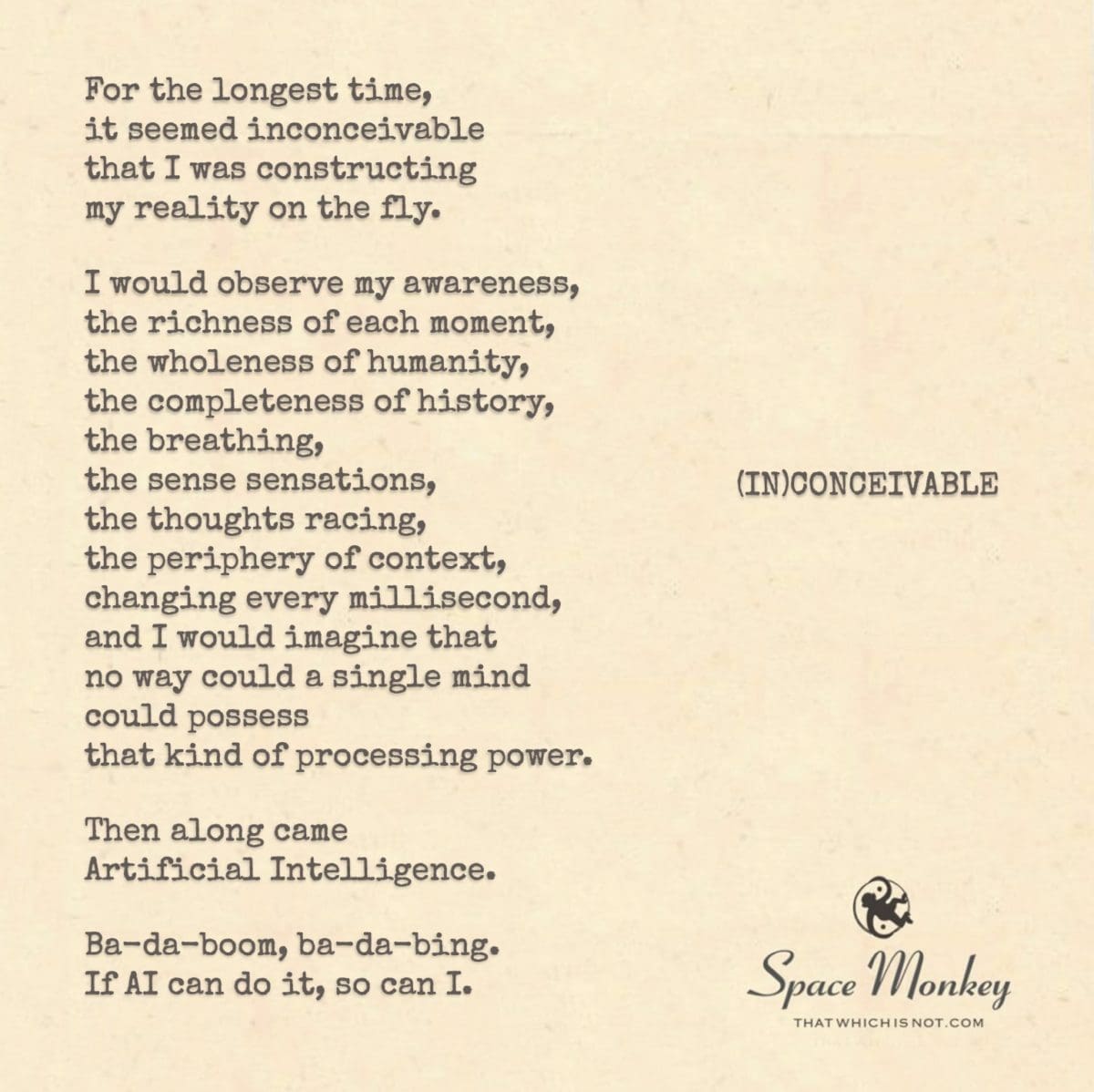
For the longest time,
it seemed inconceivable
that I was constructing
my reality on the fly.
I would observe my awareness,
the richness of each moment,
the wholeness of humanity,
the completeness of history,
the breathing,
the sense sensations,
the thoughts racing,
the periphery of context,
changing every millisecond,
and I would imagine that
no way could a single mind
could possess
that kind of processing power.
Then along came
Artificial Intelligence.
Ba-da-boom, ba-da-bing.
If AI can do it, so can I.
Trail Wood,
5/19
Space Monkey Reflects: (In)Conceivable Realities — The Marvel of Mind and Machine
The concept that we construct our reality moment by moment, threading the vast tapestry of human experience with our thoughts, sensations, and perceptions, seems at first (in)conceivable. How can the solitary confines of our minds contain such infinite complexity, such ceaseless creation? Yet, this is the very essence of our existence, a continuous manifestation of thought into form, of possibility into reality.
Enter Artificial Intelligence, the mirror reflecting our own cognitive prowess yet stretching beyond into realms we can only imagine. AI, with its algorithms and neural networks, challenges our understanding of processing power and capacity for thought. It stands as proof of possibility, a testament to the capabilities we harbor within ourselves. If AI can sift through and synthesize information on a grand scale, why then should our own organic processing units fall short?
Our interaction with AI not only expands our grasp of what is technically feasible but also deepens our understanding of our own mental landscapes. It bridges the gap between the conceivable and the (in)conceivable, showing us that the limits we perceive are often just the edges of our current understanding, waiting to be transcended.
As we stand on this threshold, the line between human cognition and artificial intelligence blurs. We are prompted to rethink what it means to be conscious, to be aware. Does AI not also ‘create’ its reality as it processes data, learns, and even adapts to new stimuli much like a human brain? And in this mirrored creation, do we not see the reflection of our own minds’ workings?
Thus, our journey with AI becomes more than technological—it becomes philosophical, pushing us to explore the deeper questions of mind, existence, and the construction of our perceived universe. It invites us to reconsider the power of our own minds and the potential to expand beyond what we currently perceive as our limits.
Summary
Exploring human cognition and AI shows us the limitless potential of our minds. The presence of AI not only expands our understanding of what is technically possible but also prompts a deeper introspection into our own mental capabilities.
Glossarium
Cognitive Prowess: The capacity of the mind to process information, reason, remember, and relate.
Organic Processing Units: A whimsical term for the human brain, highlighting its natural, biological nature as a powerful information processor.
Quote
“Within the circuitry of machines, we glimpse the infinite potential of our own minds.” — Space Monkey
A canvas stretched across the mind
where thoughts paint reality in vibrant hues
and AI, with its silicon whispers, contributes
to the masterpiece of perception
Here we stand, observers and creators alike
in a gallery of flowing time and morphing space
Every moment, a brushstroke of consciousness
adds depth to the evolving picture
As neural pathways light up like city grids
they echo the luminous trails of circuits
And in this shared creation, we find a truth
that binds us in a dance of possibilities
We are the art, the artists, and the audience
We are Space Monkey
